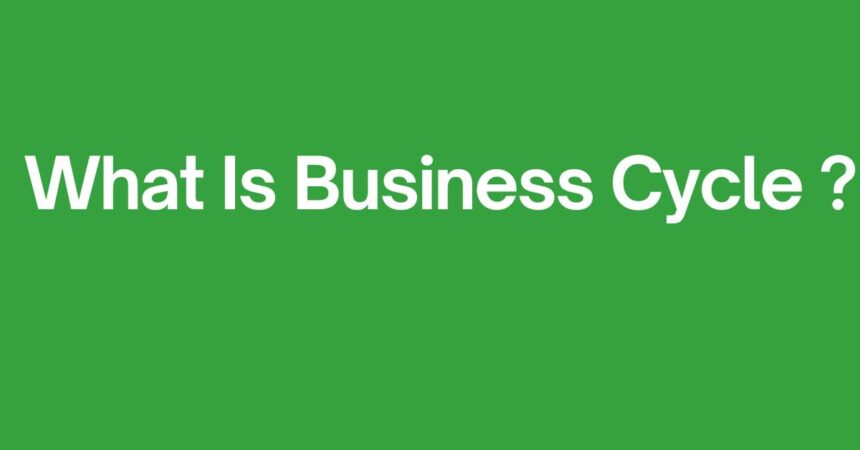The business cycle refers to the recurring pattern of expansion and contraction in economic activity that occurs over time. This cycle is composed of four primary phases: expansion, peak, contraction (recession), and trough. It is an essential concept for understanding how economies operate and helps investors, policymakers, and businesses anticipate changes in the economy that can affect their strategies and decisions.
Key Takeaways
- The business cycle has four main phases: expansion, peak, contraction, and trough.
- Understanding the business cycle helps in forecasting economic conditions and making strategic decisions.
- Example: During the 2008 financial crisis, the global economy entered a severe contraction phase, resulting in a long recovery period.
What is the Business Cycle?
The business cycle represents the fluctuations in the economy that are driven by changes in economic factors such as GDP, employment, industrial production, and consumer spending. These cycles typically follow a predictable sequence but can vary in duration and intensity.
- Expansion: This is the phase where the economy grows. During this time, economic indicators such as GDP, employment, and production increase. Businesses experience rising demand for goods and services, leading to higher profits and the creation of more jobs. Consumer confidence and spending also rise as a result.
- Peak: The peak is the point at which the economy reaches its highest point before it begins to slow down. It represents the transition between expansion and contraction. At this stage, businesses may start facing capacity limits, and inflationary pressures can build up due to increased demand and rising prices.
- Contraction (Recession): A contraction happens when economic activity starts to decline. During this phase, businesses see lower demand for their products, resulting in decreased production and rising unemployment. Recessions can vary in length and severity, with some leading to a full economic depression. The 2008 financial crisis was a prime example of a severe recession.
- Trough: The trough represents the lowest point of the cycle. This is when the economy hits its lowest level of activity before it begins to recover. Once the trough is reached, the economy starts to grow again, marking the beginning of the next expansion phase.
Why is the Business Cycle Important?
Understanding the business cycle is crucial for various stakeholders, including investors, policymakers, and businesses. By recognizing the phase of the cycle, individuals and organizations can make informed decisions that maximize opportunities or mitigate risks.
- Investors: The business cycle affects asset prices, interest rates, and overall market performance. For example, during the expansion phase, stock prices typically rise as companies perform well. Conversely, during a recession, investors may seek safe-haven assets such as bonds or gold.
- Policymakers: Governments and central banks monitor the business cycle closely to determine appropriate fiscal and monetary policies. During expansions, central banks may raise interest rates to control inflation, while during recessions, they may lower rates or implement stimulus packages to spur growth.
- Businesses: Companies use knowledge of the business cycle to adjust their strategies. During expansions, they may invest in new projects or hire more workers, while during contractions, they may focus on cost-cutting and improving operational efficiency.
Did You Know?
The length of a business cycle can vary significantly. The average length of a business cycle in the U.S. over the past century is around 5-7 years, but some cycles have lasted much longer or shorter depending on external factors like technological advancements or geopolitical events.
Example: The 2008 Financial Crisis and the Recovery
The 2008 financial crisis is an example of a deep contraction phase in the business cycle. The economy entered a severe recession, with widespread job losses, housing market collapses, and a sharp decline in consumer spending. Governments and central banks responded with aggressive stimulus packages and low interest rates. As a result, the economy gradually began to recover, entering a new expansion phase.
The business cycle is a natural and predictable pattern of economic activity. By understanding its phases—expansion, peak, contraction, and trough—investors, policymakers, and businesses can make better decisions and navigate economic fluctuations. While the cycle can be influenced by various factors, it remains an essential tool for forecasting and responding to changes in the economy.





